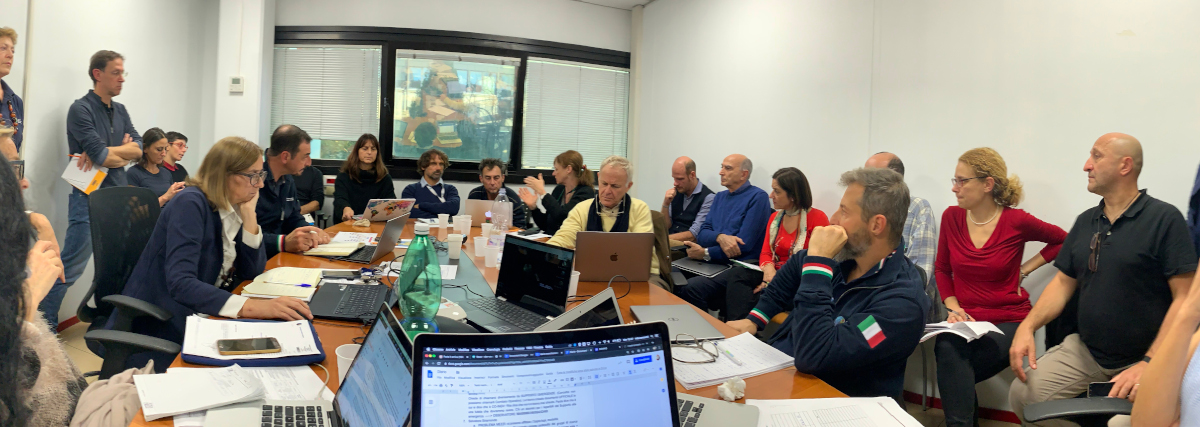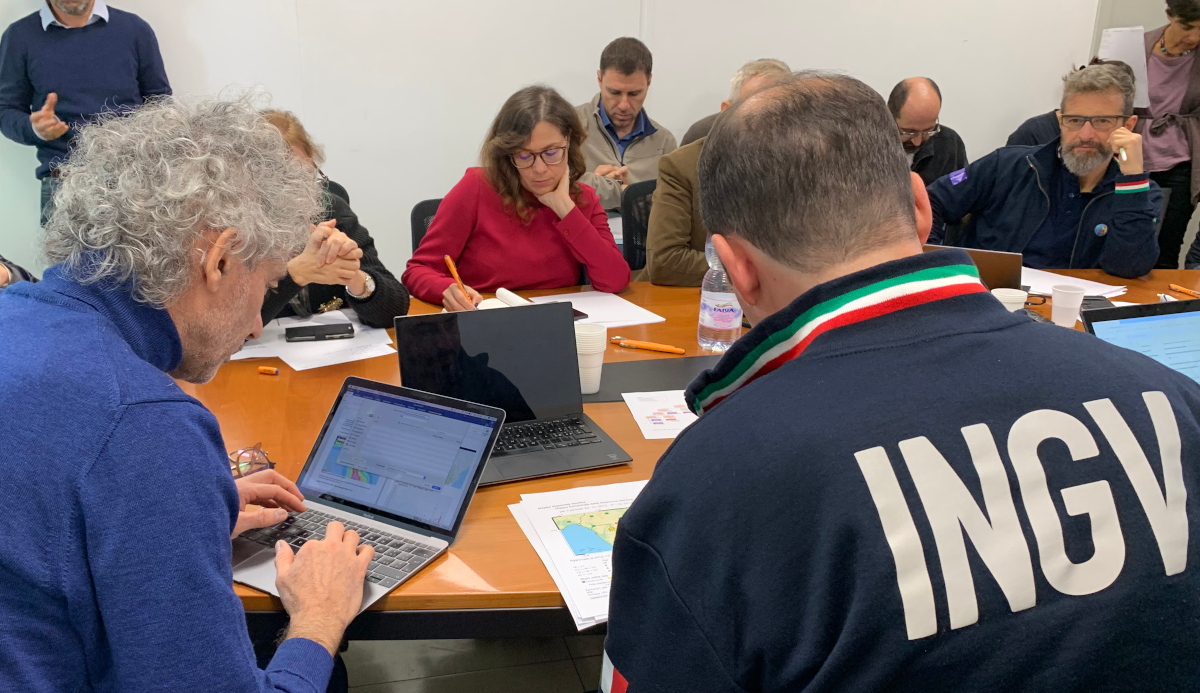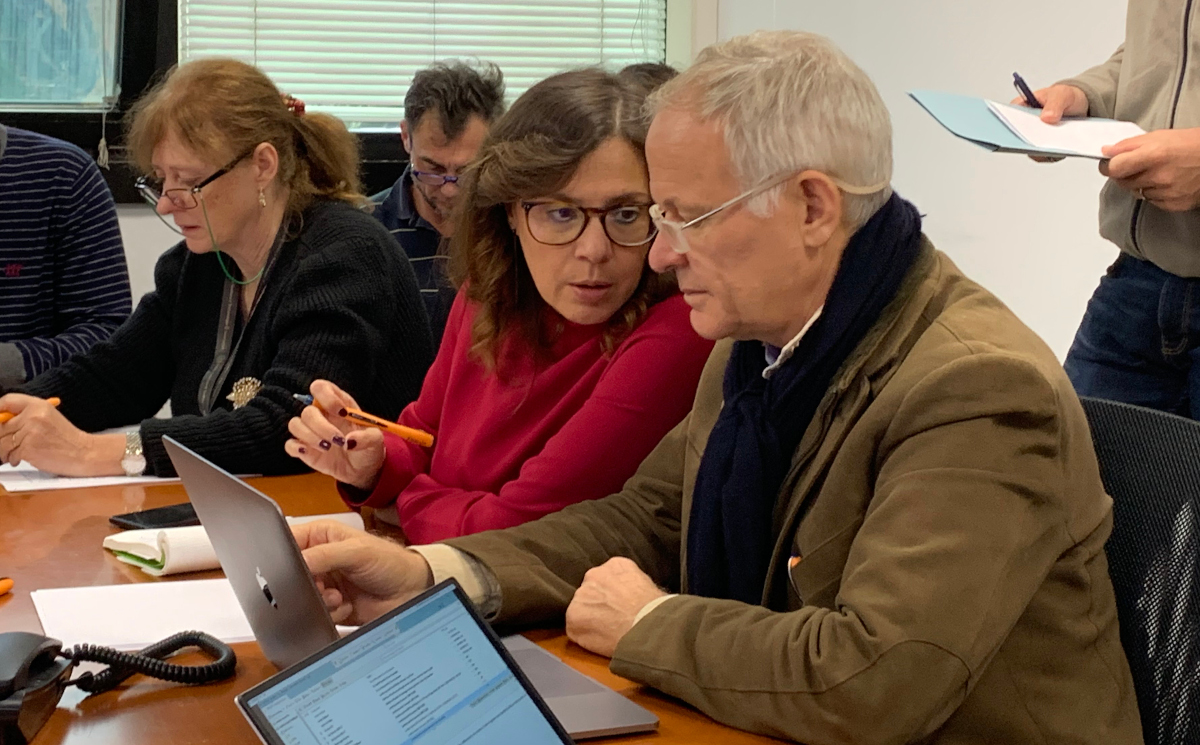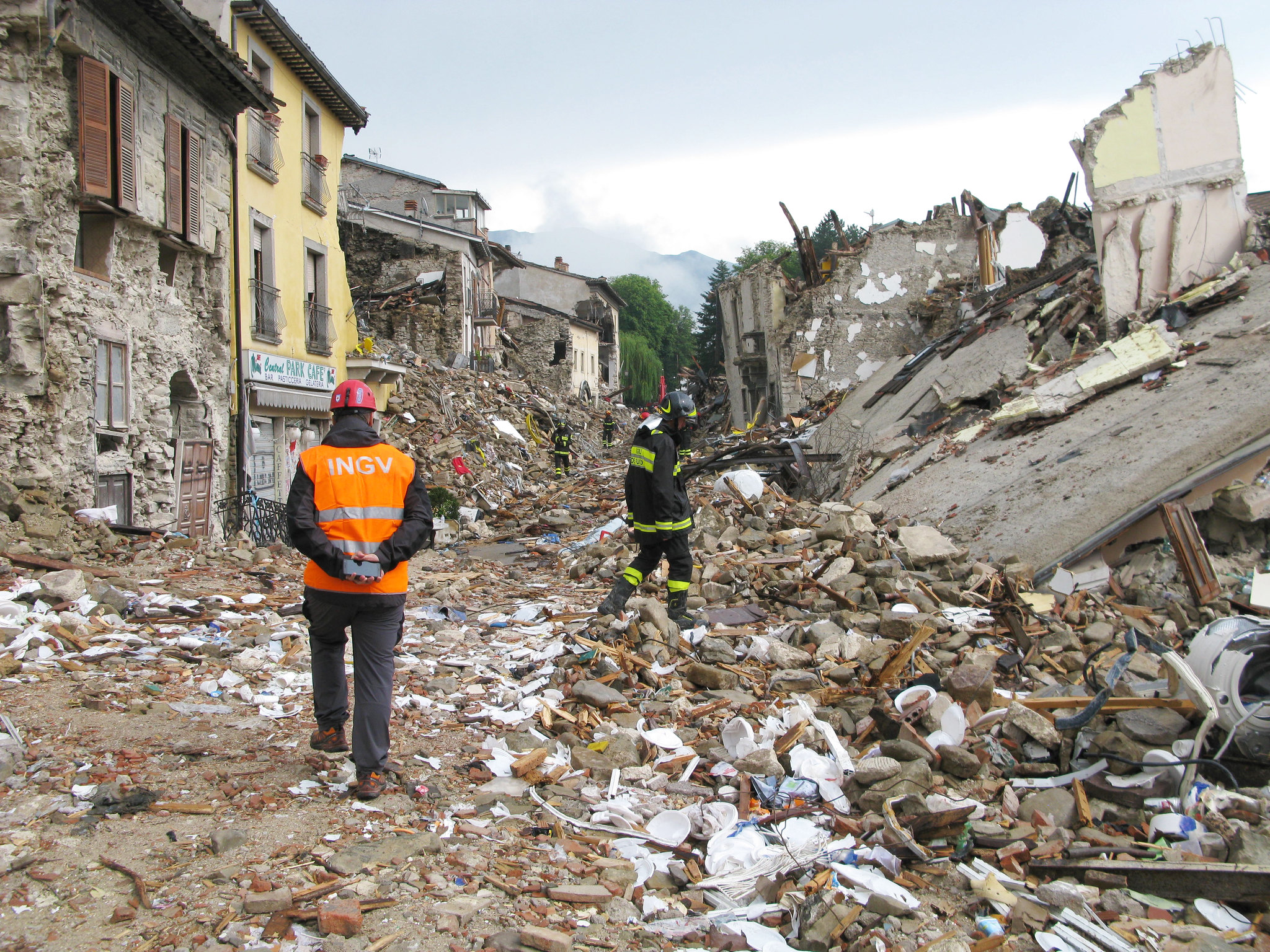


In the photo: the INGV Crisis Unit meeting during the exercise "for command posts" (table-top) held on November 20, 2019. The exercise involved more than 100 personnel, from all INGV offices, and had the aim of testing the Organization's Protocol for the management of seismic and tsunami emergencies. The Crisis Unit, made up of the Entity's strategic figures including the President and the General Manager, has the task of managing and coordinating the technical-scientific activities that are carried out in the case of emergency and to guarantee the information towards the inside of the INGV and towards the outside or DPC, Major Risks Commission and towards the public/population.
When a major seismic event occurs, many sections of the INGV intervene and participate in the management of seismic and tsunami emergencies, based on well-defined operating protocols. In the event of a seismic or tsunami emergency, the Crisis Unit and the Operational Groups are activated, which operate in the shortest possible time, largely directly on the ground, to collect data aimed at a better understanding of the event in progress.
INGV currently has 5 operational groups which are activated immediately in the event of significant earthquakes in the national territory:
- which deals with the installation of a temporary seismic network to improve the localization of the sequence in progress.
- which deals with the relief of cosismic geological effects;
- which deals with the study of site effects;
- which carries out the macroseismic survey
- IES aimed at information activities for schools and the population involved.
The activities of the INGV operational groups are codified in the context of internal protocols and provide for actions to be carried out in the event of an emergency, starting from the SMS that the national coordinators of all the groups receive with the communication of the automatic preliminary parameters of the event to a few minutes after its occurrence.
All the information collected during a seismic emergency is integrated and processed to become a useful tool for emergency workers, e.g. the Department of Civil Protection. Since INGV is one of the Department's Centers of Expertise, it can also activate the Seismic Emergency Operations Center (COES), where INGV personnel facilitate the collection and immediate and widespread dissemination of the collected data.
The last significant emergency was that in central Italy, which began on 24 August 2016 with the Mw 6.0 earthquake that occurred between the municipalities of Amatrice, Accumoli, Arquata del Tronto and between the provinces of Rieti and Ascoli Piceno. On that occasion, as envisaged in the Agreement in force between INGV and the Civil Protection Department, the Crisis Unit, the Emergency Operational Groups and all the personnel involved in emergency activities were immediately activated. Just 4 days after the seismic event of 24 August 2016, the Command and Control Directorate (Di.Coma.C., the national coordination center of the Civil Protection Components and Operational Structures in the area affected by the earthquake) was established the former INPDAP headquarters in Rieti. Inside it, together with other Centers of Competence, INGV activated the COES, which remained active until the closure of the entire structure 7 months later.
The COES was designed and built to be a multifunctional and modular structure in relation to the needs of emergency services, with technical-scientific supervision functions in the epicentral area. The main purpose was and is to support INGV personnel engaged in all field operations, scientific and informational support for INGV colleagues, but also for rescue operators involved in emergencies (Fire Brigade, Volunteer Associations , Law Enforcement, Army, etc.), for employees of Local Administrations and Public Offices and for the population affected by the event.
The continuous updating of the Protocols used by INGV is carried out on the basis of the numerous post-seismic intervention experiences faced in the last 20 years, from Umbria-Marche in 1997-1998 onwards. All the past experiences, including the periodic exercises, are very important because they have made it possible to add a further piece to a long process which today allows INGV personnel to deal with any emergency in a more aware manner.
Obviously emergency communication needs a separate chapter, which has as its primary objective that of providing, quickly, correct and understandable information to the citizen, using all the available media, in particular social channels, such as Twitter, Facebook, the INGVterremoti app and dedicated INGV blogs.





